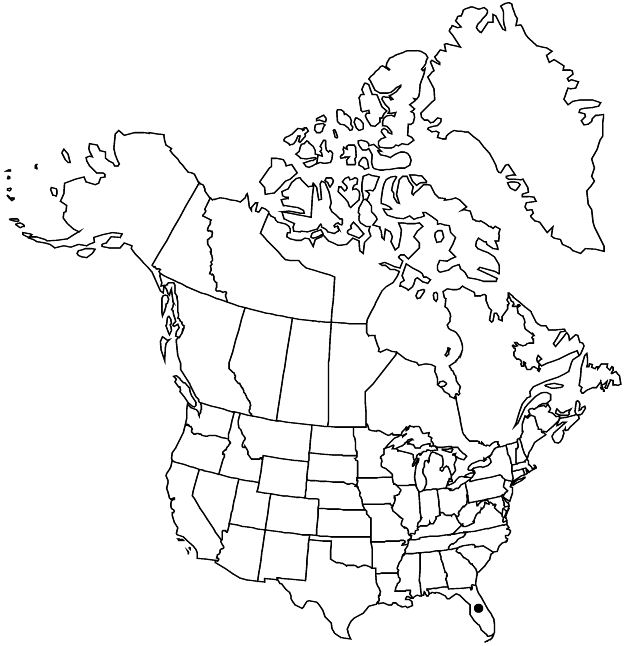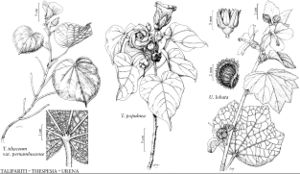Difference between revisions of "Thespesia populnea"
Ann. Mus. Natl. Hist. Nat. 9: 290. 1807.
FNA>Volume Importer |
FNA>Volume Importer |
||
| Line 10: | Line 10: | ||
|special_status={{Treatment/ID/Special_status | |special_status={{Treatment/ID/Special_status | ||
|code=F | |code=F | ||
| − | |label= | + | |label=Illustrated |
}}{{Treatment/ID/Special_status | }}{{Treatment/ID/Special_status | ||
|code=I | |code=I | ||
| Line 18: | Line 18: | ||
|name=Hibiscus populneus | |name=Hibiscus populneus | ||
|authority=Linnaeus | |authority=Linnaeus | ||
| + | |rank=species | ||
|publication_title=Sp. Pl. | |publication_title=Sp. Pl. | ||
|publication_place=2: 694. 1753 | |publication_place=2: 694. 1753 | ||
| Line 45: | Line 46: | ||
-->{{#Taxon: | -->{{#Taxon: | ||
name=Thespesia populnea | name=Thespesia populnea | ||
| − | |||
|authority=(Linnaeus) Solander ex Correa | |authority=(Linnaeus) Solander ex Correa | ||
|rank=species | |rank=species | ||
| Line 60: | Line 60: | ||
|publication title=Ann. Mus. Natl. Hist. Nat. | |publication title=Ann. Mus. Natl. Hist. Nat. | ||
|publication year=1807 | |publication year=1807 | ||
| − | |special status= | + | |special status=Illustrated;Introduced |
| − | |source xml=https://jpend@bitbucket.org/aafc-mbb/fna-data-curation.git/src/ | + | |source xml=https://jpend@bitbucket.org/aafc-mbb/fna-data-curation.git/src/f50eec43f223ca0e34566be0b046453a0960e173/coarse_grained_fna_xml/V6/V6_691.xml |
|subfamily=Malvaceae subfam. Malvoideae | |subfamily=Malvaceae subfam. Malvoideae | ||
|genus=Thespesia | |genus=Thespesia | ||
Revision as of 23:06, 16 December 2019
Trees 2–12 m. Stems lepidote to glabrate when young. Leaves: stipules 3–7 mm; petiole mostly 2/3–1 times length of blade; blade 6–13 cm, apex acute or acuminate, venation palmate, with nectariferous zone near base of midrib. Inflorescences: flowers large. Pedicels erect, stout, shorter than subtending petiole; involucellar bractlets irregularly inserted, ligulate. Flowers: calyx 8–10 mm, subglabrous, minutely lepidote; petals 4–6 cm, punctate; staminal column pallid, ca. 1/2 length of petals, apically 5-dentate, glabrous; style exceeding stamens; stigmas decurrent. Capsules (3–)5-locular, 3–3.5 cm diam.. Seeds 8–9 mm. 2n = 24, 26.
Phenology: Flowering year-round.
Habitat: Littoral vegetation
Elevation: 0 m
Distribution

Fla., Asia, Africa, Pacific Islands (New Guinea), Australia, introduced also in Mexico (Veracruz), West Indies, n South America.
Discussion
Thespesia populnea is sometimes grown as a shade tree, and has been found in coastal Florida from Brevard and Sarasota counties south to Monroe County, most commonly on the Florida Keys. The species is thought to be native to coastal areas of the Indian and Pacific oceans and widely introduced and naturalized in the New World. The capsules float and have distributed the seeds widely. It has been used widely for food, lumber, fiber, and medicine.
Selected References
None.
